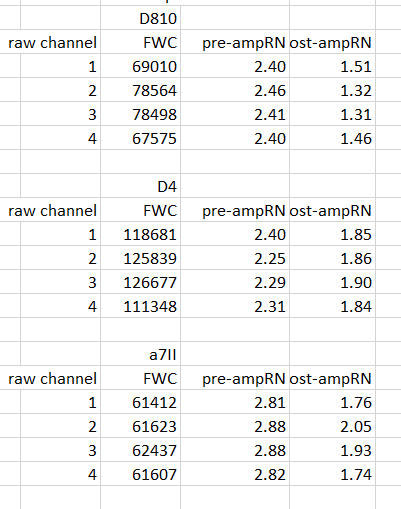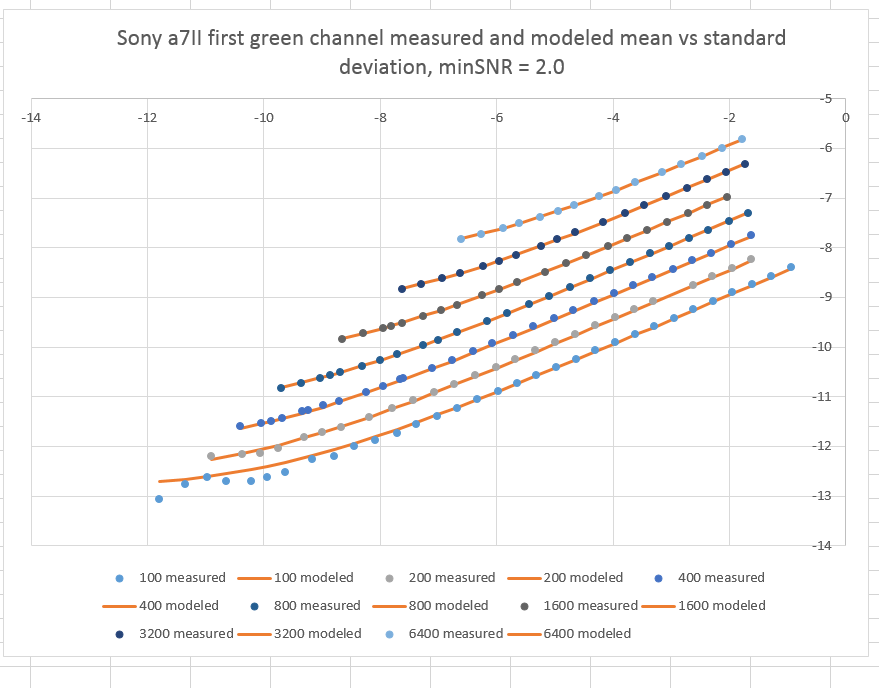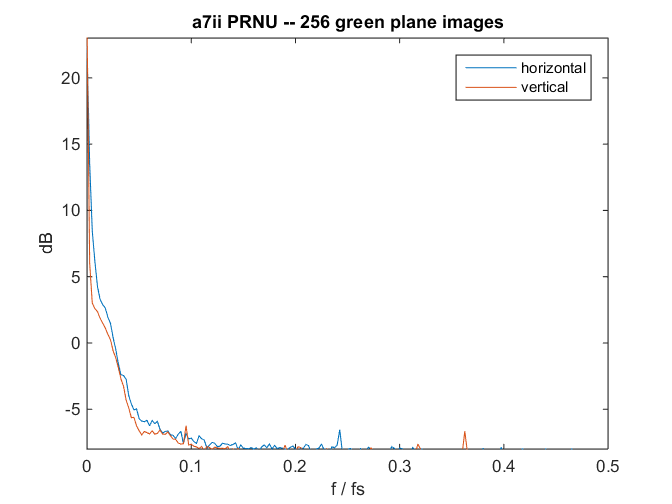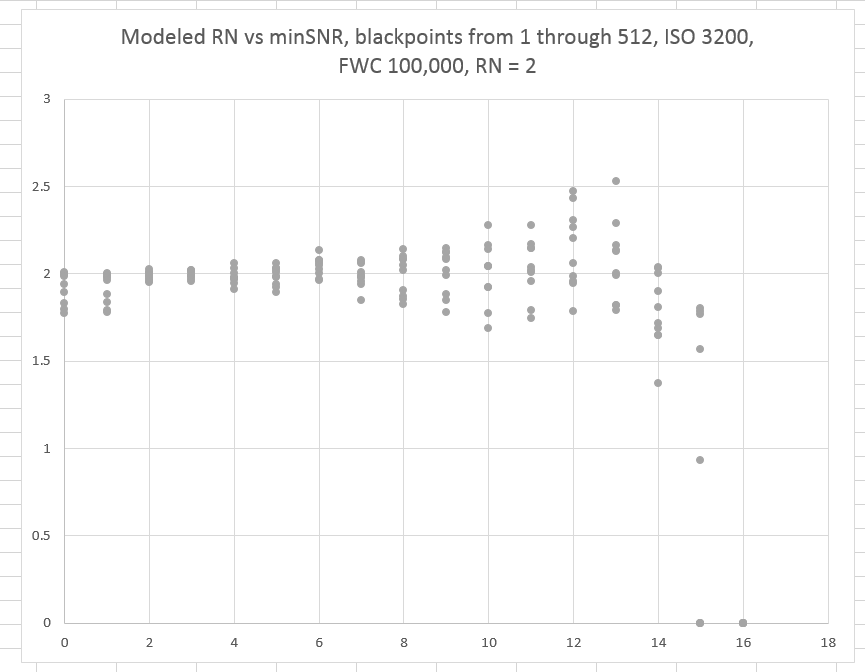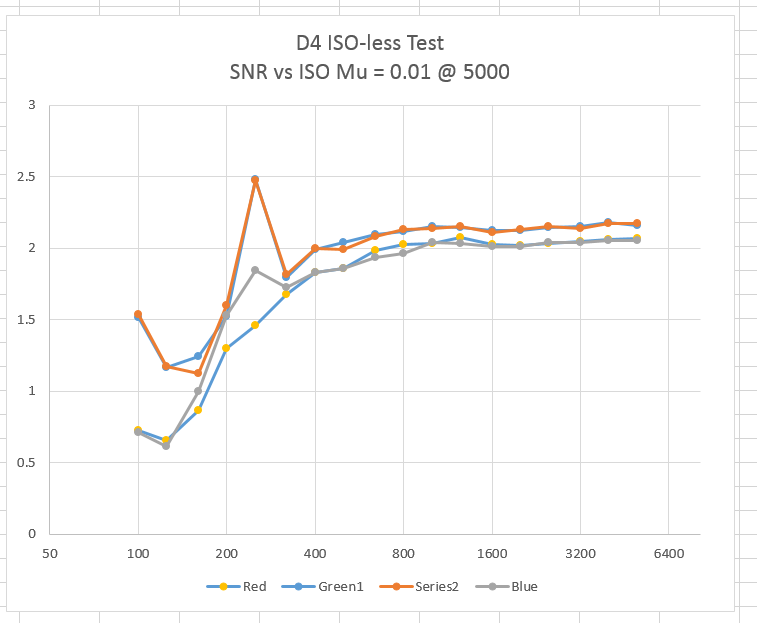Yesterday, I presented the result of fitting the a7II data to the standard photon-transfer model. Today I’ll compare those results to two other cameras, the Nikon D4 and D810. Here are the numbers: In the table above, we separate the read noise into two components, as described earlier. The first is the read noise on the… [Read More]
Modeling the a7II FWC and read noise for many ISOs
Now that I’ve taught DCRAW and my Matlab analysis program to be on the same page with the a7II files, I set about to find the read noise (RN) and the full well capacity (FWC) of the camera across a range of ISOs. I told the modeling program to consider all ISOs from 100 to… [Read More]
Sony a7ii PRNU
[Note: this post has been completely rewritten as of 12/19/14. The previous conclusions were in error because of discrepancies between the way that DCRAW unpacks the .ARW files fom this, and presumably other a7 cameras, and the way that the camera reports itself to RawDigger and other programs. To DCRAW, the a7II is a 12… [Read More]
Cleaning the data set based on SNR
In this post I talked about how some low-mean-value points in the data set can be truncated on the left of the histogram by in-camera firmware, and discussed a criterion based on signal-to-noise ratio (SNR) for leaving points out of the data set so that they don’t confuse the modeling of the camera-under-test’s read noise…. [Read More]
A test for “ISO-less-ness”
Now that we have the data set described in this post, we can mine it in unconventional ways (as composed to the more-or-less standard look at the data presented yesterday). One thing that I’m usually interested in when I get a new camera is where I should stop turning up the ISO knob and just… [Read More]
- « Previous Page
- 1
- …
- 221
- 222
- 223
- 224
- 225
- …
- 384
- Next Page »
